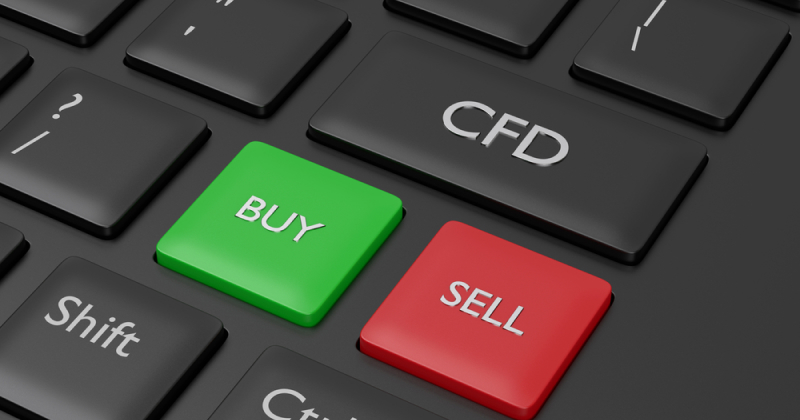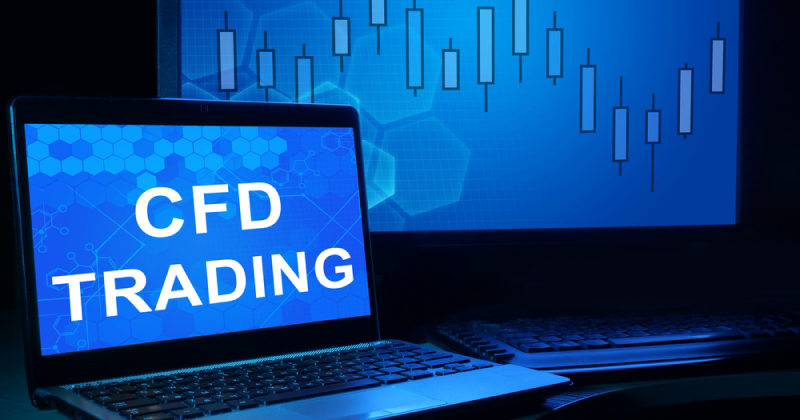How to trade CFD
.jpg)
- How to trade CFDs online Thanks to the innovative technology in global trading, you can count on cutting-edge platforms to carry out your trading business. You'll need a regulated CFD broker and a platform/software to trade online. Remember, you don't have to own the underlying assets when trading CFDs. You have the job of speculating if the asset's price will rise or fall. As at the time of writing this article, the current price of silver per ounce is $27.99. If you speculate that the price will rise, you can open a long (buy) trade. If the price grew to $50 an ounce when you closed the trade, you'd make a profit of $22.01. However, if the price did fall to $15, you would have made $12.99 per ounce in losses. You may be wondering; can I profit when the price of an asset falls? The simple answer is yes. With the same illustration above, if you think the price of silver will fall, you can open a short (sell) trade. If the silver price fell from $27.99 an ounce to $15 an ounce, you'll profit $12.99. However, if the price of silver rose to $50 an ounce, you would lose $22.01. Steps to Trading CFDs
- Forex CFDs
- Indices CFD
- Crude Oil CFD
- Conclusion
Are you looking forward to creating a robust trading portfolio with flexible financial instruments? CFDs allow traders to use leverage to access thousands of instruments and trade on falling and rising markets. They are high-risk products due to leverage, and we highly recommend to experienced traders only. In this article, you'll learn the intricacies of these products and how to trade CFD like a pro.
How to trade CFDs online
Thanks to the innovative technology in global trading, you can count on cutting-edge platforms to carry out your trading business. You'll need a regulated CFD broker and a platform/software to trade online. Remember, you don't have to own the underlying assets when trading CFDs. You have the job of speculating if the asset's price will rise or fall. As at the time of writing this article, the current price of silver per ounce is $27.99. If you speculate that the price will rise, you can open a long (buy) trade.
If the price grew to $50 an ounce when you closed the trade, you'd make a profit of $22.01. However, if the price did fall to $15, you would have made $12.99 per ounce in losses.
You may be wondering; can I profit when the price of an asset falls? The simple answer is yes. With the same illustration above, if you think the price of silver will fall, you can open a short (sell) trade.

If the silver price fell from $27.99 an ounce to $15 an ounce, you'll profit $12.99. However, if the price of silver rose to $50 an ounce, you would lose $22.01.
Steps to Trading CFDs
If you are ready to start trading CFD, you'd want to be sure you have to understand how this particular trading style works. In the US, over the counter financial instruments, including CFDs, are extremely regulated by legislation like the Dodd-Frank Act and implemented by the Securities and Exchange Commission (SEC). If you are a citizen or resident in the United States, your broker will not offer you CFD options due to these security laws. Nevertheless, here are proven steps to profitable CFD trading.
- Choose Your Market
- Buy or Sell
- Trade Size
- Add a Stop Loss
- Monitor Your Trade
- Close Your Trade
You can trade CFDs on over 4000 global markets, including Europe, Asia, Australia, the UK, the US, and Africa. You should choose a market that suits your trading style, and more importantly, meets your goals. There are no limits to the instruments you can trade; you can choose from Forex, cryptocurrency, treasuries, stocks, indices, and more.
Depending on your sense of observation, you can either buy (go long) or sell (go short) when trading CFD.
Short PositionTraders take a short position when they speculate a fall in the asset's value; they select the "sell" option to repurchase the contract. If the value of the asset indeed fell, the trader will make a profit. The profit is calculated by the difference between the opening and closing price of that asset. However, if the asset increased in value, the open trade will bear a loss.
Long PositionIn CFD trading, traders take the long position when they foresee the underlying asset to increase in value. In this case, they select the "buy" option to speculate that the asset will appreciate over the contract's duration.
The primary benefit of CFD trading over other trading methods is that it is a leveraged product. You can open a trade with a small percentage of the overall trade value, known as margin. However, the larger the size of trade you wish to open, the larger the margin required.
One golden rule of every trading strategy is adding stop loss/limits to your trade. An essential risk management routine is to place an order, such as a stop-loss, that automatically closes the trade if the market enters a specific level.

After traders place their trade and the necessary stop-limits, they can now monitor their profit and loss on the platform as it fluctuates according to price movement in the market. It is a good practice you monitor your trade. Should price swings go against your favor, you'd be able to take necessary actions to cut losses.
Select the "close" option in the position window on the platform to close your trade. Once you do this, you get an instant rundown of your profits or losses in your account cash balance. Your broker calculates your profit or loss by multiplying the amount the market moved by your trade size in the market's base currency.
Forex CFDs
With CFD, you can buy or sell currency pairs depending on whether you think the underlying value will rise or fall. Trading forex CFDs comes with many benefits. You don't need the full amount to trade due to leverage, and you also have the added tax benefit of not having to pay the stamp duty.Traders must consider certain economic factors before they trade Forex CFDs. These include differentials in inflation, interest rates, economic performance, and political stability.
Indices CFD
Instead of investing in the index itself, you can use a CFD account to profit from its price movement. It is another profitable way of diversifying your portfolio. You can take advantage of CFD leverage while selecting from an industry-leading range of indices that matches trading technique and investment goals.
Crude Oil CFD
Another name of crude oil is black gold. It is a popular commodity among traders, and one way of taking advantage of its lucrative opportunities is using CFD. If you trade oil on CFD, you'll need a solid technical strategy to help pick out optimal trade entry points and price targets. Oil prices fluctuate depending on economic developments around the world. You'd want to stay in touch with news from major oil companies, oil-producing countries, and OPEC meetings.
Conclusion
CFD is a highly popular leveraged product with huge profits if you learn to play the game right. With a reliable and regulated broker, you can trade CFDs with indices, Forex currency pairs, commodities, ETFs, stocks, cryptocurrencies, bonds, and more. While it is not available to US traders due to local regulations, it has remained a dependable trading vehicle to European investors and the rest of the global markets.









